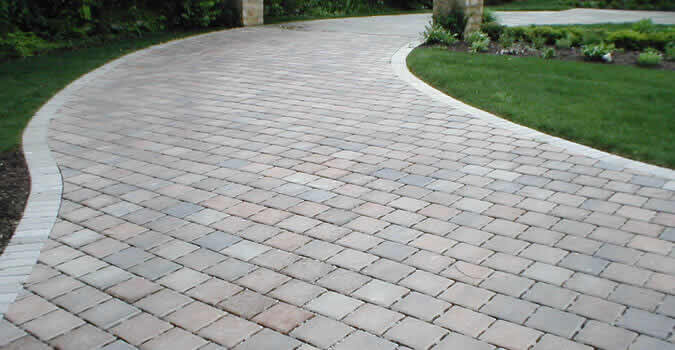What size plate compactor do I need for pavers?
Maximize Efficiency and Quality in Your Landscape Constructions
When embarking on a paver project, whether it's building a dream patio or laying a durable driveway, the foundation's compaction is critical. For professionals who manage small landscape construction businesses, making informed decisions about the right size plate compactor is key to ensuring project success without overspending on unnecessary power or size. This guide simplifies the process, helping you choose the ideal plate compactor for your next paver project.
Understanding Compaction Needs for Paver Projects
The foundation of any paver project is its compacted base. The right compaction prevents pavers from shifting and helps avoid water pooling and uneven surfaces. But not all projects require the same level of compaction force. Here's what you need to know:
- Small Projects: For projects like garden walkways or small patios, a compact plate compactor with a compaction force around 3,000 pounds per square foot is sufficient. These are easier to maneuver in tight spaces and cost-effective.
- Medium to Large Projects: Driveways, large patios, and commercial pathways demand a heavier compactor, one that offers between 5,000 to 7,000 pounds per square foot of compaction force. This ensures a stable foundation capable of handling heavier loads.

Photo by: Chop Chop Landscaping
What is a plate compactor?
A plate compactor is a heavy, flat piece of equipment that is used to compact or flatten surfaces. This can include new pavers and the ground surrounding them. It comes in a variety of sizes and its crucial to choose the right size for your job.
For example, if you're working on a very small area, you won't need an industrial-sized machine. Choosing the wrong size will result in uneven compaction and could cause damage to your property as well as create more work for yourself by having to do it all over again!
When choosing what size plate compactor is right for your needs, there are several things you should consider:
- What type of material will be compacted?
- How much weight is required for the project?
- How much space are you trying to cover?
- Do I need a gas model or electric model?
Photo by: Tomahawk Power
What is a paver pad?
A paver pad is a polyethylene plastic pad that is placed under the plate compactor to prevent scuffing, marring, or cracking over pavers or bricks. You should always use a paver pad to protect bricks, stones, and pavers. As other methods will not protect as much weight as a polyethylene pad will.
Choosing the Right Size Plate Compactor
Your project's scale and the type of soil you're working with are two primary factors determining the size of the plate compactor needed:
- Project Scale: Larger areas require a compactor that can cover more ground efficiently. However, for pros who values maneuverability for residential projects, a medium-sized compactor often strikes the perfect balance between efficiency and ease of use.
- Soil Type: Granular soils, common in paver projects, compact well with standard plate compactors. Cohesive soils, however, may require a more powerful machine to achieve the desired density.
Features to Look for in a Plate Compactor for Pavers
- Compatibility with Paver Pads: Protect your pavers from damage by choosing a compactor that can be fitted with a rubber mat or paver pad.
- Reliable Engine: A Honda engine, known for its reliability and easy maintenance, can save you time and money in the long run.
- Portability: For businesses where projects are spread across various locations, a compactor that's easy to transport is invaluable. Look for models with wheel kits for easy movement.
FAQs to Guide Your Purchase
Q: How do I know if the compactor is right for my soil type? A: Most compactors are suitable for granular soils found in paver projects. For cohesive soils, consult the manufacturer's guidelines or opt for a model recommended for versatile soil types.
Q: Can the same plate compactor be used for different-sized projects? A: Yes, but efficiency varies. A medium-sized compactor is versatile, but for large-scale projects, consider a model designed for greater efficiency over larger areas.
Wrapping Up: Your Path to Perfectly Paved Projects
Choosing the right plate compactor is more than just a purchasing decision; it's a step toward ensuring the longevity and beauty of your paver projects. For professionals balancing cost, efficiency, and reliability is crucial. By focusing on your project's specific needs and selecting equipment that aligns with those requirements, you can ensure that each paver project is a testament to your craftsmanship and attention to detail.
Remember, investing in the right tools is investing in your business's future success. With the guidance provided here, you're well on your way to selecting a plate compactor that will serve as a reliable partner in all your future landscaping projects.
Glossary
Compaction: The process of compressing soil or other materials to increase their density and stability.
Granular Soil: Loose, coarse materials like sand or gravel, which are easier to compact.
Cohesive Soil: Contains clay and sticks together, requiring more force to compact.
Paver Pad: A protective layer placed between the plate compactor and the paving material to prevent damage.
Honda Engine: Referenced as a reliable engine type for plate compactors, known for efficiency and low maintenance.










